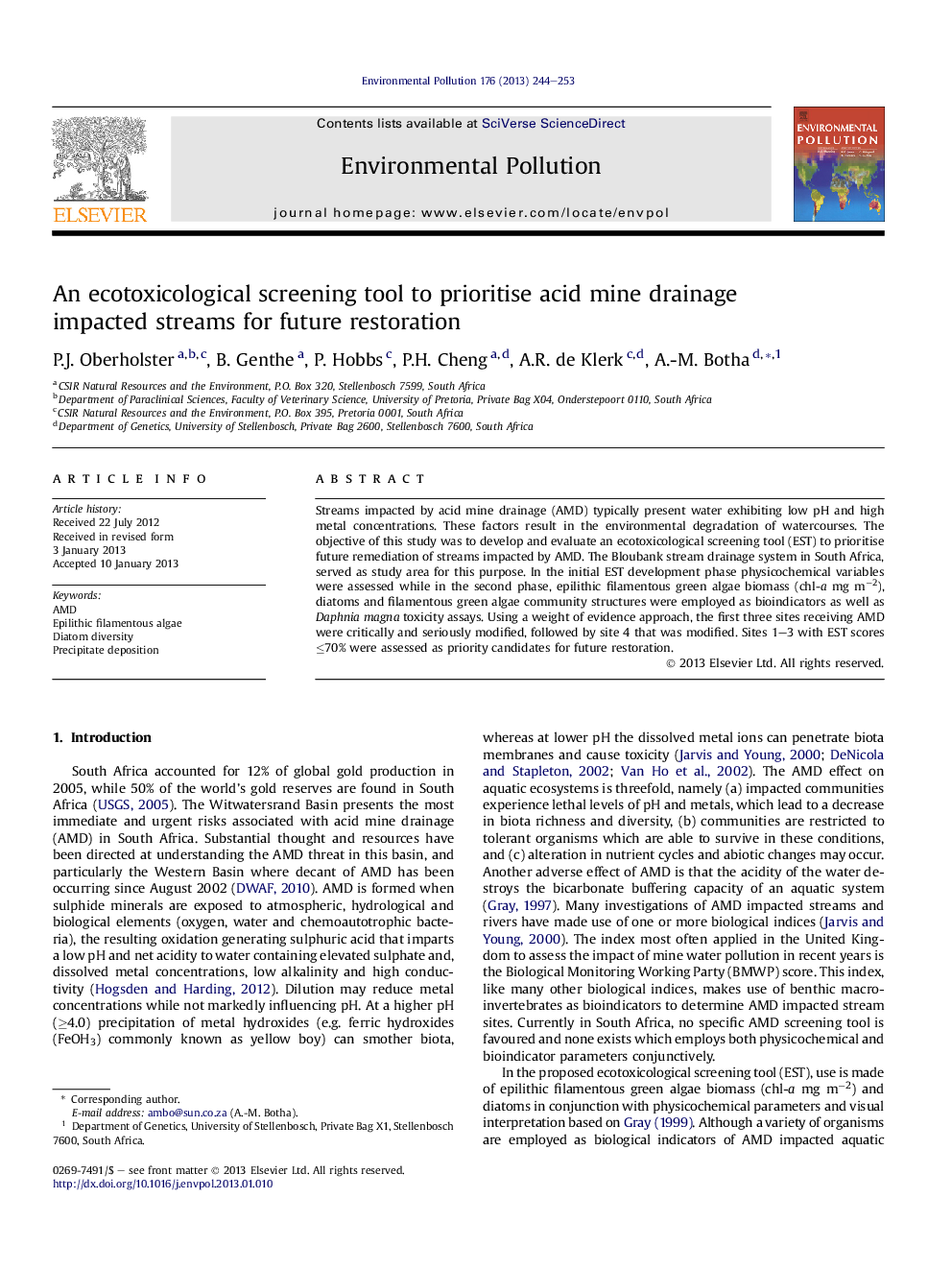| کد مقاله | کد نشریه | سال انتشار | مقاله انگلیسی | نسخه تمام متن |
|---|---|---|---|---|
| 4424536 | 1619196 | 2013 | 10 صفحه PDF | دانلود رایگان |

Streams impacted by acid mine drainage (AMD) typically present water exhibiting low pH and high metal concentrations. These factors result in the environmental degradation of watercourses. The objective of this study was to develop and evaluate an ecotoxicological screening tool (EST) to prioritise future remediation of streams impacted by AMD. The Bloubank stream drainage system in South Africa, served as study area for this purpose. In the initial EST development phase physicochemical variables were assessed while in the second phase, epilithic filamentous green algae biomass (chl-a mg m−2), diatoms and filamentous green algae community structures were employed as bioindicators as well as Daphnia magna toxicity assays. Using a weight of evidence approach, the first three sites receiving AMD were critically and seriously modified, followed by site 4 that was modified. Sites 1–3 with EST scores ≤70% were assessed as priority candidates for future restoration.
Decanting acid mine drainage (AMD) is threating the Cradle of Mankind (World Heritage Site) in South Africa.Figure optionsDownload as PowerPoint slideHighlights
► Preservation of World Heritage Site is under threat by decanting acid mine drainage (AMD).
► AMD impacted streams contain metal hydroxide precipitates, low pH and high metal concentrations.
► Ecotoxicological screening tool (EST) prioritises future remediation of AMD impacted streams.
► Developed EST makes use of a combination of substrate quality variables and bioindicators.
► Surveyed sites with EST scores ≤70% were assessed as stressed to severely stressed.
Journal: Environmental Pollution - Volume 176, May 2013, Pages 244–253